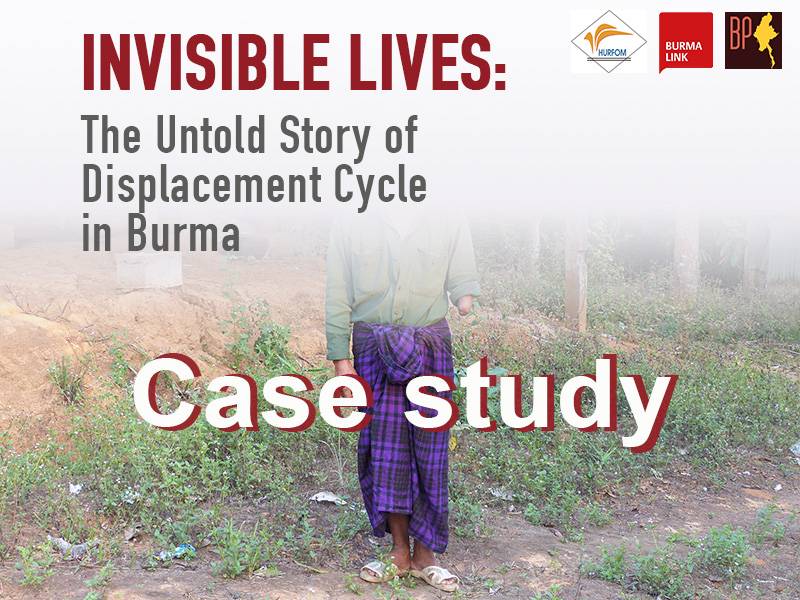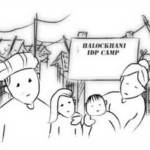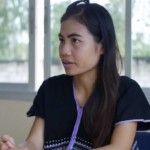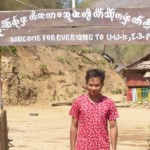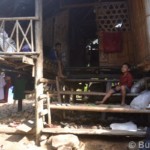Burma Link | September 14, 2016
The following case study is from the joint report “Invisible Lives: The Untold Story of Displacement Cycle in Burma” by Human Rights Foundation of Monland (HURFOM), Burma Link, and Burma Partnership, which was launched in a press conference in Rangoon on August 12th and in Moulmein on August 15th. The 65-page report focuses on the continuing concerns of the displaced ethnic nationality communities, particularly the ethnic Mon, living along Burma’s southeast border and finds that the recent reforms have not yet addressed the causes of their displacement.
Download the full report (PDF) in English
Download the full report (PDF) in Burmese
The following is the second case study in a series that HURFOM, Burma Link and Burma Partnership will be publishing in the coming weeks along with a series of selected interviews. The series is meant to give more in depth understanding into the situation of Mon IDPs and villagers. See methodology in the report.
Landmine Victim in Jo Haprao, Bee Ree1: Case Study 2
As a result of years of armed conflict, large areas of southeast Burma are now contaminated with landmines. In an extensive survey led by the TBC in 2014, out of the 222 village tracts surveyed in south-east Burma, landmine pollution was documented in 53% of the village tracts.2 In 2016, the Special Rapporteur on the situation of human rights in Burma noted, “Landmines and unexploded ordnance are a major factor preventing IDPs’ return, with casualties from landmines estimated at 3,700 over the past 15 years but likely to be far higher.”3 Mine Free Myanmar has identified over 40,000 landmine survivors.4 The Special Rapporteur has called on all par-ties to the conflict to immediately cease the use of landmines.5
For many of the IDPs and refugees, the presence of landmines is an impediment to their return. Burma has yet to accede to the Mine Ban Treaty and mine clearance by government accredited humanitarian demining organizations has not been established. As presented in this case of Nai Hong Chan6 treatment and rehabilitation costs for landmine survivors are high and often only provided in major cities. Thus, landmine survivors often cross the border seeking health care in places such as the Mae Tao Clinic in Mae Sot, Thailand, led by well-known humanitarian actor from Burma, Dr. Cynthia Maung.
Nai Hong Chan currently lives in Jo Haprao IDP site in Bee Ree with his wife, daughter and three sons. Nai Hong Chan grew up in Kyaing Joar under government oppression, and as a child, was often forced to porter for the Burma Army. When Nai Hong Chan was 28 years old, he went to Sangkhlaburi, Thailand along with 80 other villagers to retrieve tin to be used for a roof in a monastery. During this trip, a mine explosion changed his life; “my hands and two eyes disappeared,” he recalls.
In 1996, with the help of his friends in All Burma Students’ Democratic Front (ABSDF), Nai Hong Chan was able to have an artificial eye fitted in Bangkok, an operation he says was supported by the UN. Having no means to work and support himself or his daily medicine, Nai Hong Chan came to Jo Haprao in 1999. “At that time, MRDC gave a lot of support here. Due to my misfortune, I could not work, so I decided to come here,” he stated. Due to the reduction in aid, however, Nai Hong Chan’s wife has had to bear the brunt of the rising costs for his care, which became increasingly difficult after she was diagnosed with cancer in 2004. Although she is now better and one of their sons takes whatever odd jobs he can find to support them, the family has been forced to live on debt. Nai Hong Chan says they currently owe approximately 1,000,000 kyat (US $840), which his wife and his son struggle to pay off. He stated, “If we cannot pay it back, we will just accept whatever that is going to happen to us.”
Despite the difficult reality, Nai Hong Chan hasn’t lost his ability to dream. He wants to go to Bangkok to check and treat his eyes and open his own shop in Jo Haprao to cover the cost of his food and medicine.
- Mon IDP, FGD and interview with author, Jo Haprao, 25 February 2016.
- The Border Consortium “Protection and Security Concerns in South East Burma/Myanmar,” The Border Consortium (2014): 3, accessed June 26, 2016, http://www.theborderconsortium.org/media/54376/report-2014-idp-en.pdf.
- United Nations, Human Rights Council, Report of the Special Rapporteur on the situation of human rights in Myanmar, Yang-hee Lee, A /HRC/31/71 (18 March 2016) available from https://documents-dds-ny.un.org/doc/UNDOC/GEN/G16/055/13/PDF/G1605513.pdf?OpenElement.
- Landmine & Cluster Munition Monitor Myanmar/Burma, “Landmine Monitor Myanmar/Burma,” International Campaign to Ban Landmines (2015): 16.
- It should be noted that landmines in Burma are a complex issue as not only armed actors but even villagers have laid landmines in order to protect themselves from the Burma Army attacks.
- Name has been changed to protect the identity of the individual.

